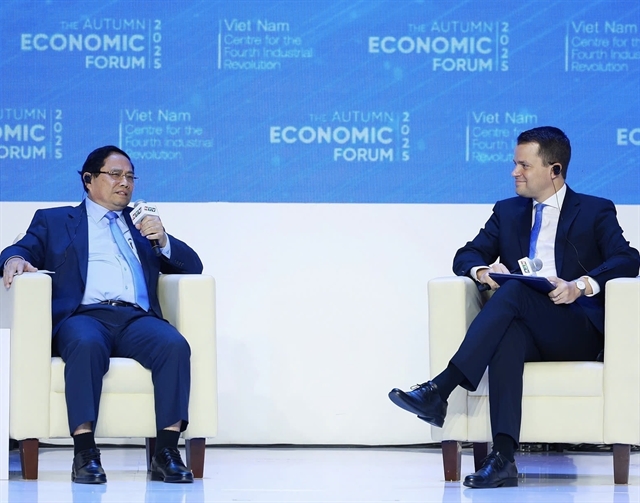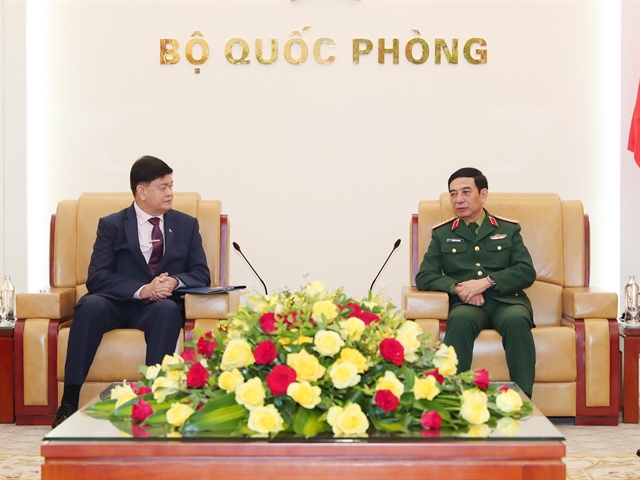 Economy
Economy


|
| A factory of Vina Kraft Paper Co which is being financed by Thai and Japanese investors in the southern province of Bình Dương. — VNA/VNS Photo Chí Tưởng |
HÀ NỘI — Foreign investment inflows into Việt Nam during the first nine months of this year rose 4.4 per cent year-on-ear to US$22.15 billion despite the impact of COVID-19, according to the Foreign Investment Agency (FIA) under the Ministry of Planning and Investment.
Up to 1,212 foreign-invested projects were licensed with a total registered capital of $12.5 billion in the period, down 37.8 per cent in the number of projects but up 20.6 per cent in value over the same period last year.
Meanwhile, 678 operating projects were allowed to raise their capital by $6.6 billion, a year-on-year rise of 25.6 per cent in capital but down 15.8 per cent in project number.
Capital contributions and share purchases by foreign investors stood at nearly $3.2 billion, down 43.8 per cent from the same period last year, according to FIA.
The decreases in the numbers of new, expanded projects and paid-in capital for share purchase were attributed to Việt Nam's selective investment attraction policies that would prioritise quality of projects rather than quantity, while eliminating small-scale projects with low added value, FIA said in its monthly report.
Travel restrictions and long quarantine policy made it hard for foreign investors to make surveys for their planned projects, the agency said.
It added lockdown and travel restriction measures also affected operations of foreign-invested firms, resulting in their production capacity reductions and supply chain disruptions. That also affected new investors’ plans to invest in Việt Nam.
Due to factory closures and labour shortages for production, many orders had been shifted by foreign investors to other areas in their supply chains. Although this was only a temporary solution, if this situation continues, investors would likely relocate their production facilities to other countries, FIA warned.
From January to September, disbursement of foreign direct investment (FAI) also fell 3.5 per cent year-on-year to $13.28 billion.
Among 18 sectors receiving FDI in the nine months, processing and manufacturing took the lead with $11.8 billion, accounting for 53.4 per cent of the total FDI. It was followed by power production and distribution with over $5.5 billion; real estate with $1.78 billion and wholesale and retail with over $750 million.
Singapore led 94 countries and territories investing in Việt Nam in the period with total investment capital of nearly $6.3 billion, making up nearly 28.4 per cent of the total FDI registered in the country. However, the total investment of Singaporean investors plunged 7.2 per cent year-on-year.
South Korea surpassed Japan to rank second with over $3.9 billion, up 23.4 per cent year-on-year or equivalent to 17.7 per cent of the total FDI. Japan came next with nearly $3.3 billion, up 89 per cent or 14.7 per cent. Other leading sources of Việt Nam's FDI were from mainland China, Hong Kong and Taiwan.
The Mekong Delta province of Long An attracted the highest amount of FDI, with over $3.6 billion, or 16.4 per cent of the total thanks to the Singapore-invested Long An liquefied natural gas power plant project worth $3.1 billion.
With $2.15 billion added to South Korean LG Display Hải Phòng project, Hải Phòng City came second with $2.7 billion or 12.2 per cent while HCM City came third with nearly $2.4 billion or 10.6 per cent.
Other localities having received FDI in nine months included Bình Dương, Cần Thơ, and Quảng Ninh.
However, big cities with sufficient infrastructure such as HCM City, Hà Nội and Bắc Ninh won in terms of the number of projects. Among them, the southern economic hub led the country in the number of new projects, making up 33 per cent while the capital city ranked second, making up 21 per cent though it was not among the top five localities attracting the largest amount of FDI in the nine-month period.
According to FIA, foreign-invested businesses posted a trade surplus of nearly $18.2 billion in the January-September period as they gained $178 billion from exports, a yearly hike of 23 per cent while their imports hit $159.8 billion, up 34.4 per cent.
As of September 20, the country was home to 34,141 valid foreign-invested projects worth nearly $403.2 billion. Of the sum, $245.14 billion or 60.8 per cent has been disbursed.
Among 141 countries and territories, South Korea was the largest source of Vietnamese FDI with $73.8 billion, making up 18.3 per cent of the total FDI registered in the country. It was followed by Japan with $63.9 billion or 15.8 per cent. — VNS




